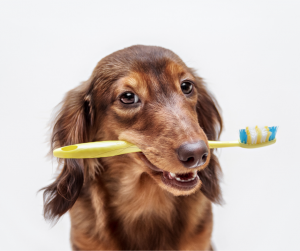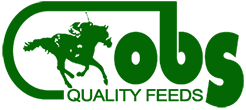Did you know that February is National Pet Dental Health Month? The American Veterinary Medical Association (AVMA)  designated this occurrence to remind pet owners that oral hygiene is crucial for the overall good health of pets. However, you don’t have to wait until winter to start caring for your dog’s teeth. The group advocates year-round brushing, cleaning, and veterinary care to help our pets keep their teeth for a lifetime – but the benefits of good oral hygiene don’t stop there.
designated this occurrence to remind pet owners that oral hygiene is crucial for the overall good health of pets. However, you don’t have to wait until winter to start caring for your dog’s teeth. The group advocates year-round brushing, cleaning, and veterinary care to help our pets keep their teeth for a lifetime – but the benefits of good oral hygiene don’t stop there.
Have you ever encountered a sweet dog with horrible “doggy breath?” It’s not his fault that you can’t stand to have him on your lap. Owners may have tried doggy breath mints, chew toys and other gimmicks, but the way to get rid of the bad breath begins with an assessment of the dog’s mouth. (Other factors can contribute to bad breath, but an oral exam will allow a veterinarian to determine if other tests are needed to solve the mystery.) Without question, dirty teeth and gums can contribute to smelly breath in dogs, cats, or people!
Other Concerns
A gorgeous, healthy “dog smile” is aesthetically pleasing, but more significantly, the condition of the mouth affects several internal organs. A dog’s kidneys, liver, and heart health are all dependent on good teeth and gums, according to the AVMA. A dirty mouth is full of bacteria, which infests under the gums and eventually attacks the bones, causing breakdown and pain for the pet. Daily brushing helps prevent tooth decay and keeps bacteria to a minimum.
Brushing the Pearly Whites
Brushing your dog’s teeth is much easier than it might sound. Look for products that make the task simpler, or ask your veterinarian, dog trainer, or groomer for help in developing a system. You will need toothpaste made for dogs; human toothpaste is too harsh to use on pets. They can also cause stomach upset in dogs, so look for products that contain chlorhexidine, hexametaphosphate, or zinc gluconate, which are recommended by many veterinarians. Flavored toothpaste may please your pet, and make brushing sessions more enjoyable. You can apply the paste with a toothbrush, terrycloth towel, or sponge. Make sure you rinse and wipe the teeth after brushing to remove loose debris from the mouth.
Other Options
In addition to brushing, choose a high-quality dog food that helps exercise the teeth and gums. You can use water-pick type appliances and specially designed toys to remove plaque, but be careful to avoid hard toys that may wear down the teeth with long-term use. Make brushing a daily routine, and your dog will be happier – and your vet bills will be lower. Why not get in the habit of brushing your dog’s teeth right after you brush your own?
In addition to brushing your dog’s teeth daily, you can also offer him or her a tasty treat that helps with plaque removal. We recommend trying CANIDAE® Grain Free Pure Heaven Adult Dog Biscuits with Salmon & Sweet Potato. They have a crunchy texture that helps keep your dog’s teeth sparkly clean!
Cleaning your dog’s teeth has never been easier or more nutritious. Yummy Combs Dog treats work like dental floss. With 44% high-quality protein and 12 other wellness ingredients packed into a highly functional shape, you can feel good about giving this treat to your dog every day. Dogs love the taste and they come individually wrapped. Stop by Ocala Breeders Feed & Supply during the month of February and we will assist you with all of your pet Dental needs.
Ocala Breeders Feed & Supply celebrates National Pet Dental Health Month with all the products needed to help your dog’s teeth stay healthy. Be sure to visit our pet section and check out our large selection of pet food.
Source: Canidae
Tags: obfs, obfs specials, Pet Dental Health
